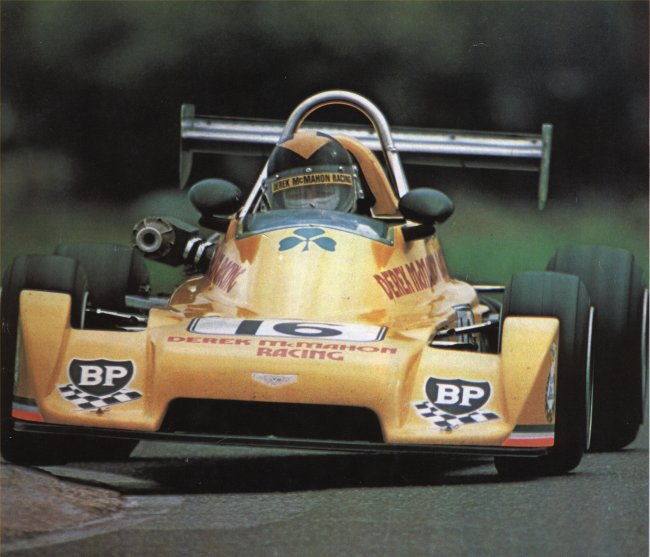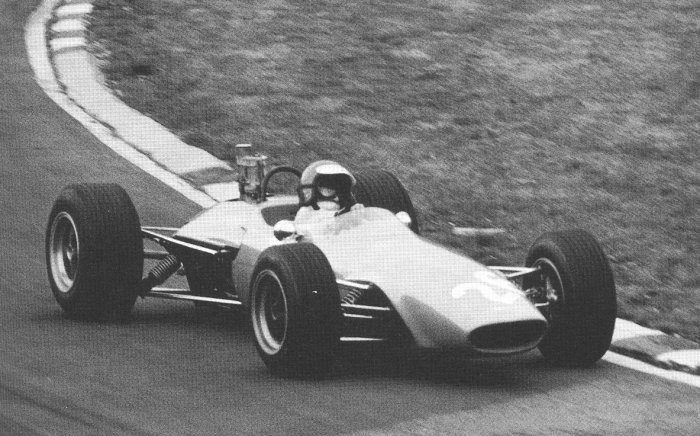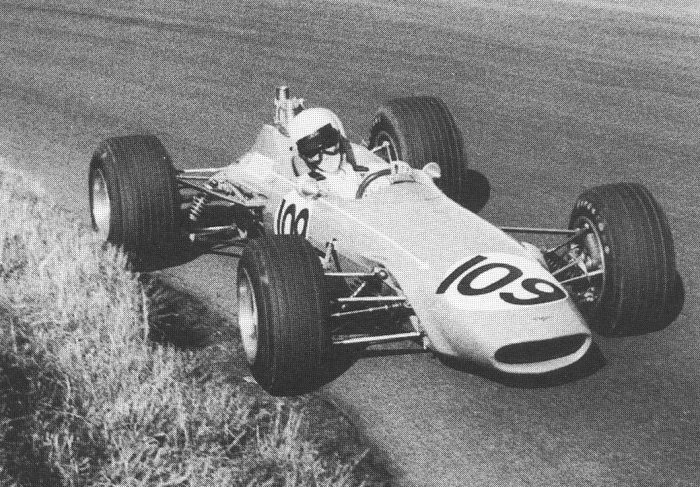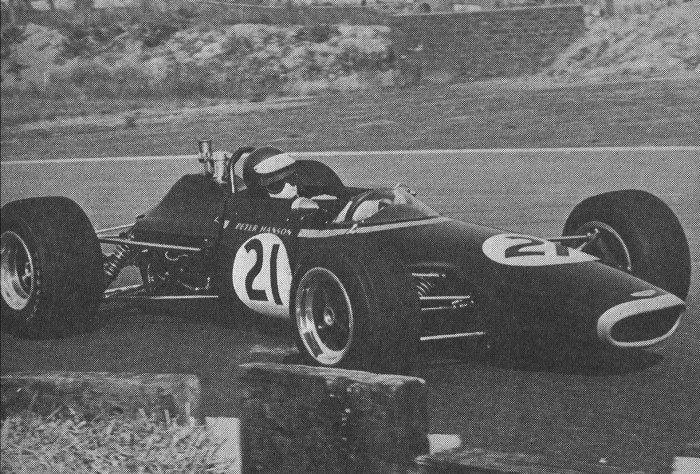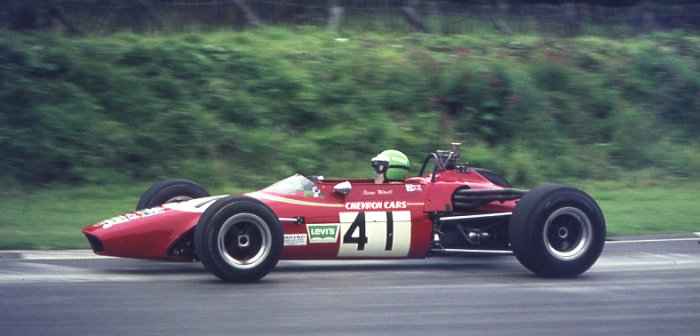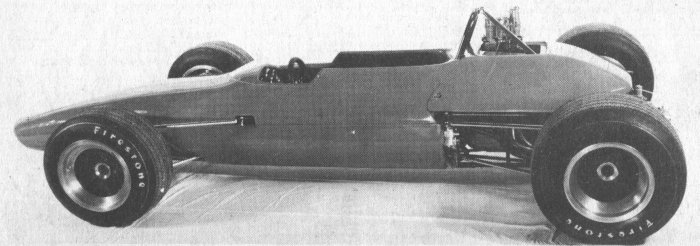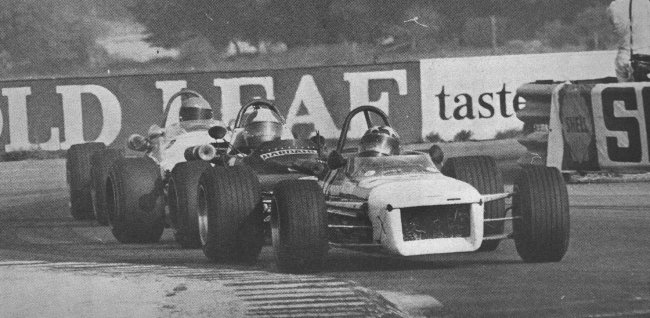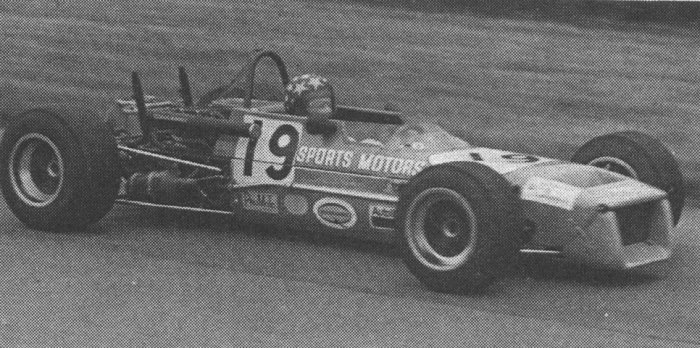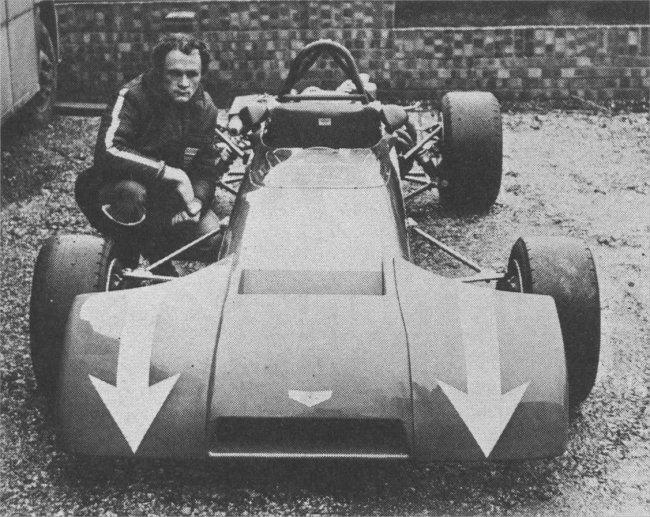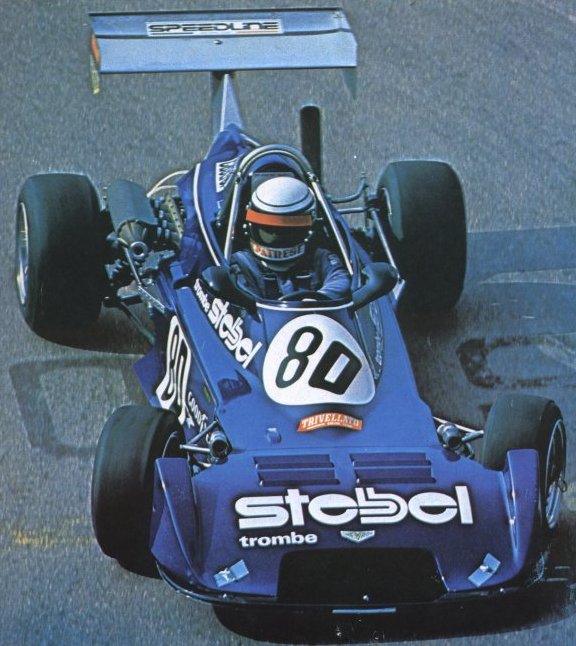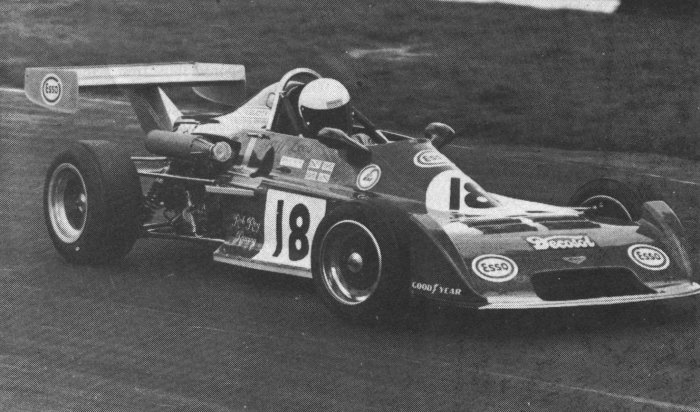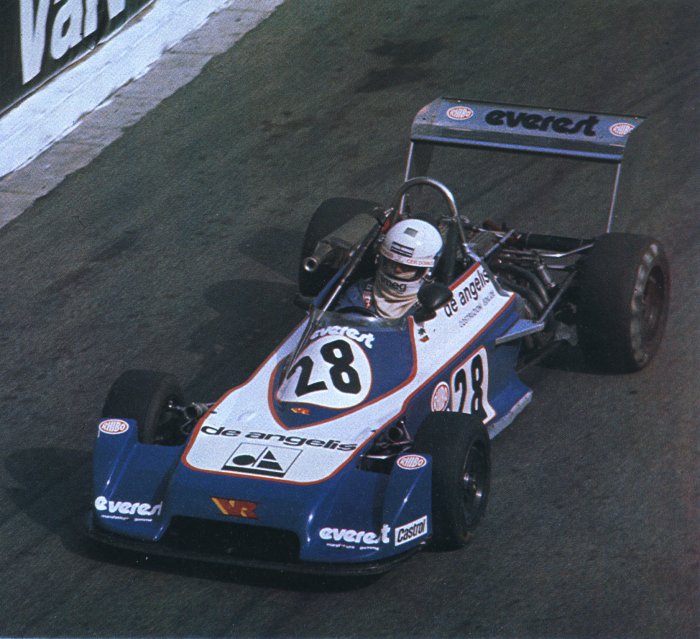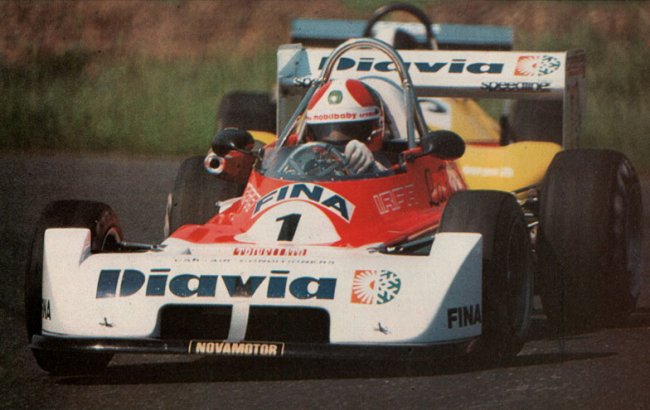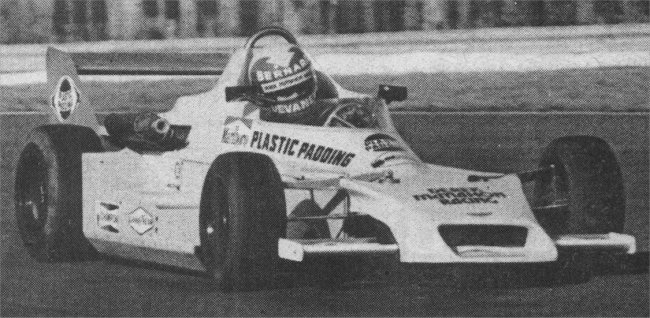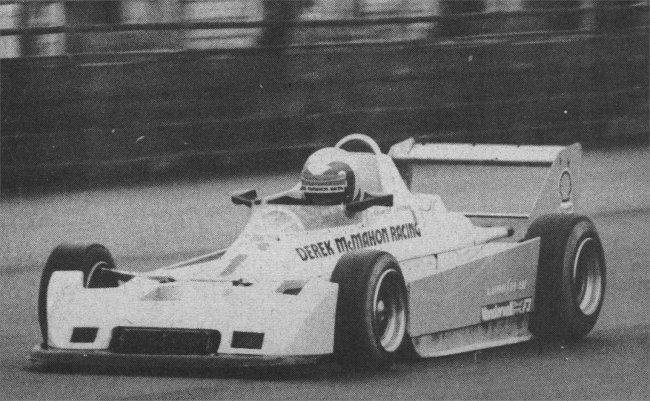Chevron
1967
1968
1969
1970
1971
1972
1976
1977
1978
1979
1980
Drivers
1967 Peter Gethin.
1968 B9
Dave Berry, John Fenning, Howard Heerey, John Ralph, Alan Rollinson, Tim Schenken, Harry Stiller, Chris Williams.
B9B
Peter Gethin, Chris Williams.
1969 B15C
John Ralph.
B15
Alessandro Angeleri, Franco Conti, Howden Ganley, Peter Hanson, René Ligonnet, G Mariella, Barrie Maskell, Terry McGrath, Luigi Petri, Giorgio Pianta, Alan Rollinson, Richard Scott, Cyd Williams, Reine Wisell.
B9
Barrie Smith, René Ligonnet, Barrie Maskell.
1970 B17
Jürg Dubler, Norman Foulds, Peter Hanson, Bert Hawthorne, Barrie Maskell, Rolf Riesen, Ken Sedgley, Chris Skeaping, Etienne Vigoreux.
B15
Ian Ashley, Sandro Cinotti, René Ligonnet, Barrie Maskell, Steve Machett, Brendan McInerney, Carlo Scarambone, Mike Tobitt, Cyd Williams.
1971 B18
Barrie Maskell.
B17
Mike Beuttler, Sandro Cinotti, Adolfo Corazza, Jurg Dubler, Marivaldo Fernandes, Peter Hanson, Bendicht Kipfer, Barrie Maskell, Terrance Peterson, Giorgio Pianta, Klaus Reisch, Carlo Scarambone, Ken Sedgley, Chris Skeaping, Keith St John, Mike Tobitt.
B15
Luis Bueno, Giuseppe Piazzi.
1972 B20
Chris Skeaping.
B17
John Finch, Graham Lynch, Maximilian Plass, Carlo Scarambone.
B15
Herb Moger.
1973 B17
Maximilian Plass.
1974 B17
Horst Floth.
1976 B34
Rudolf Dötsch, Rupert Keegan, Geoff Lees, Riccardo Patrese, Fernando Spreafico, Marc Surer.
1977 B38
Elio de Angelis, Phillippe Colonna, Jim Crawford, Derek Daly, Jochen Dauer, Rudolf Dötsch, Rad Dougall, Eje Elgh, Chris Farrell, Beppe Gabbiani, Patrick Gaillard, Ian Grob, Wolfgang Holy, “Il Liscio”, Rëto Jorg, Fernando Jorge, Hanspeter Kaufmann, Werner Klein, Wolfgang Klein, Geoff Lees, Piero Necchi, Jac Nelleman, Jorg Reto, Hans Royer, Jean-Louis Schlesser, Alan Smith, Henrik Spellerberg, Paolo Squillace, Willi Siller, Siegfried Stohr, John Stokes, Thorkild Thyrring, Derek Warwick.
B34
David Brotherston, Lauro Campano, Alain Corbisier, Rudi Dötsch, Jorg Reto, Jean-Louis Schlesser.
1978 B43
Michael Bleekemolen, Quirin Bovy, Helmut Bross, Jim Crawford, Jochen Dauer, Pierre Dieudonné, Rudolf Dötsch, Eje Elgh, James King, Patrick Gaillard, Lamm van de Hauvel, Steve Malins, Gianluca Messini, Jean-Louis Schlesser, Alan Smith, Siegfried Stohr, Patrick Stüder.
B38
Elio de Angelis, Bernd Breil, Phillip Bullman, Pierre Dieudonne, Jochen Dauer, Werner Fischer, Barry Green, Hans-Peter Hoffmann, Howdy Holmes, Franz Konrad, Derek Lawrence, John Lewis, Steve Malins, Rob Moores, Benoit Morand, Axel Plankenhorn, Huub Rothengatter, Ros de Giaxa de Salvi, Heinz Schaltinat, Jean-Louis Schlesser, Jürgen Schlich, Ken Silverstone, Alan Smith, John Stokes.
B34
David Brotherston.
?
Walo Schibler.
1979 B47
Jochen Dauer, Bernard Devaney, Stefan Johansson, Eddie Jordan, Franz Konrad, John Lewis, Michael Roe, Karl Schuchnig, Alan Smith.
B47B
Bernard Devaney, Michael Roe, Alan Smith.
B43
Helmut Bross, Peter Cornand, Jochen Dauer, Barry Green, Franz Konrad, John Lewis (B43/47), Gianluca Messini, Rudi Seher.
B38
Hanspeter Kaufmann, Benoit Morand, Jürgen Schlich, Bernd Wicks, Peter Wicks.
B34
David Brotherston.
?
Rolf Egger, Georg Florescu, Uwe Reich, Marcus Simeon, Hanspeter Stoll.
1980 B47B
Gerry Amato, John Lewis, Bruce West.B47
“James Bald”, Roland Binder, Helmut Bross, Lothar Büchler, Wilfried Koch, Peter Kroeber, Helmut Leitner, Edgar Pohl, Jürgen Schlich.B43
Peter Cornand, Hans-Joachim Hösch, Rudi Seher, Rick Whyman, Trevor Wigglesworth.B38
Eddie Heasell, Thomas von Löwis, Kurt Thiim, Peter Wicks.B34 David Brotherston?Günther Köbele, Walo Schibler, Hanspeter Stoll.
1981 B47 Patrick Lecompte, Maurice Roger, Bernd Suckow.B43Heinz Hermann, Gerold Hirth, Hans-Joachim Hösch,OtmarNiegel.B38Peter Wicks?Albert Hamper, Karl Hasenbichler,WaloSchibler, Harald Tonat.
1982 B47Patrick Lecompte, Hervé Roger,MauriceRoger,Bernd Suckow.B43Eberhard Ernst, ErichLeitner.B38
Klaus Rehm, Harald Tonat?
Hanspeter Gafner.
1983B47
Eberhard Ernst, Maurice Roger, Gernot Sirrenburg, Bernd Suckow.B38
Manfred Hebben, Klaus Rehm?Roger Merwnie.
1984 B47
Eberhard Ernst, Maurice Roger, Klaus Trella.B38
Manfred Hebben, Placido-Daniel Pardo, Klaus Rehm?
Bert Diesner.
1985 B38Placido-Daniel Pardo.
1986 B38Placido-Daniel Pardo.
